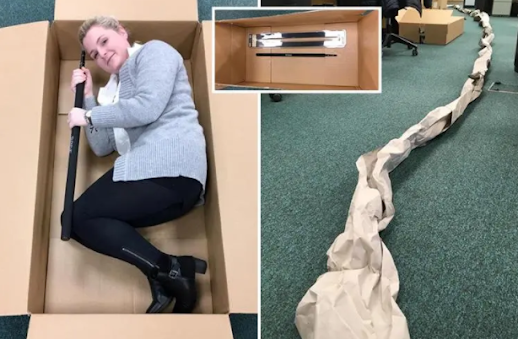Amazons packaging dilemma
Amazon delivers a small mic in a box big enough to fit a person in with 30 feet of paper.
In this post, I want to talk about how companies can make their operations more sustainable in a world where everything is being shipped straight to the consumer's doors. Since the rise of eCommerce, we have seen various trends, but a trend that keeps reoccurring is e-commerce giant Amazon's not-so eco-friendly packaging and shipping practices. I will bet that almost all of us have ordered something from Amazon and have received something small in a rather large box or package. To my surprise there is a simple reason for this; in an article published by distractify the warehouses are just running out of smaller boxes to ship things in, so they ship them in a bigger box to save time and get the packages delivered on time. With their partnership with USPS and UPS, they use flat rate shipping, so a larger box doesn’t cost them any more than a smaller box would.After further research, this is an issue that Amazon is apparently just sweeping under the rug with no explanation. With Amazon shipping over 1.6 million packages a day that’s a lot of cardboard that can be saved by using the right size box for each order. Amazon's response to this is to make the trucks fuller and help keep packages from moving around during shipment “using a Tetris packaging system”. This system is supposed to pick the right box size to maximize the volume of space per shipment to keep things from moving and breaking. Since the release of these explanations, Amazon has been getting backlash over this theory. After further research, I found a Reddit user who claims to have worked at Amazon over a year ago claims otherwise.
If Amazon and other wholesale distributors online adopted greener packaging and shipping practices, we could see a much lower carbon footprint per shipment as well as saving both Amazon and the shipping companies a lot of time and money, and labor that it takes moving these big boxes from the warehouse to the customer's door. If Amazon was truly worried about filling space on a truck why wouldn't they just create a reusable space filler that takes up the extra space on trucks to avoid unnecessary waste?




Comments
Post a Comment